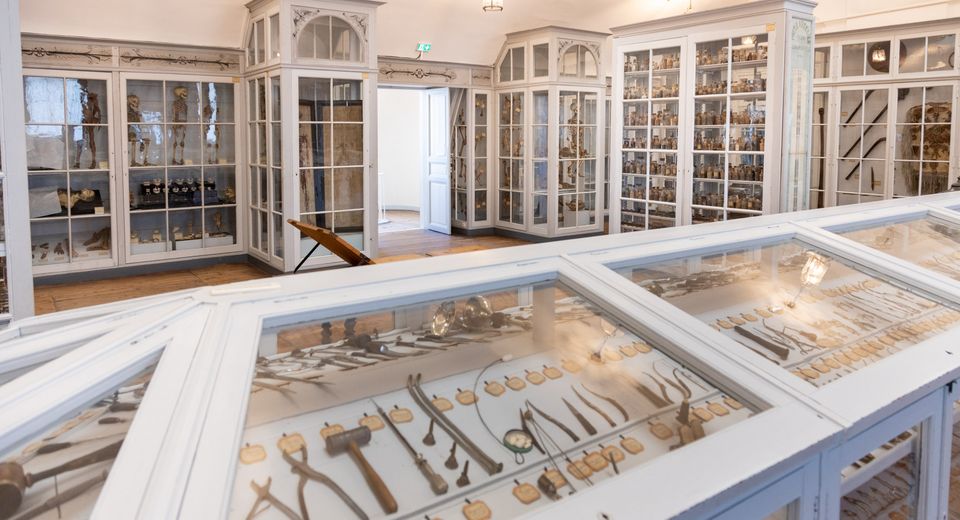The Naval Medical School’s collection of surgical instruments
Rochefort - Ancienne école de médecine navale
It currently contains over 600 surgical instruments, acquired over the centuries.
The Naval Medical School’s collection of surgical instruments testifies to the institution’s role in the training of surgeons as well as to the evolution of surgical practices.
Training surgeons
Although an ordonnance issued in 1642 recommended the presence of surgeons on board warships, in those days surgeons were trained by the Corporation of Barbers, of which they were members. They shaved and cut hair as well as being responsible for minor surgery, such as bloodletting and treating wounds. In response to the need to provide ship’s surgeons with suitable training, Rochefort’s Naval Medical School was established in 1722. It was the first of its kind anywhere in the world.
A collection illustrating the evolution of surgery
 Enlarge image : Romain-Osi-Ecole-navale-2619.jpg
Enlarge image : Romain-Osi-Ecole-navale-2619.jpg
The decision to preserve surgical instruments, even if they had become obsolete, was probably taken in the early 19th century. A display case was created to exhibit them in 1859 and they were incorporated into the School’s museum. Suture materials, syringes, catheters, instruments used for amputations, trepanations and ophthalmological and dental treatment bear witness to the main operations carried out by ship’s surgeons in bygone days.
The collection currently numbers over 600 surgical instruments, most of them from the 19th century. It serves to illustrate the sophistication of surgical practice, which provided itself with tools designed for every purpose and developed new ways of operating on patients. Many of these instruments are still used today; only the materials they are made of have changed.
Collection highlight
The essential works to see during your visit to the Musée national de la Marine in Brest, Port-Louis, Rochefort, Toulon, and soon in Paris.

